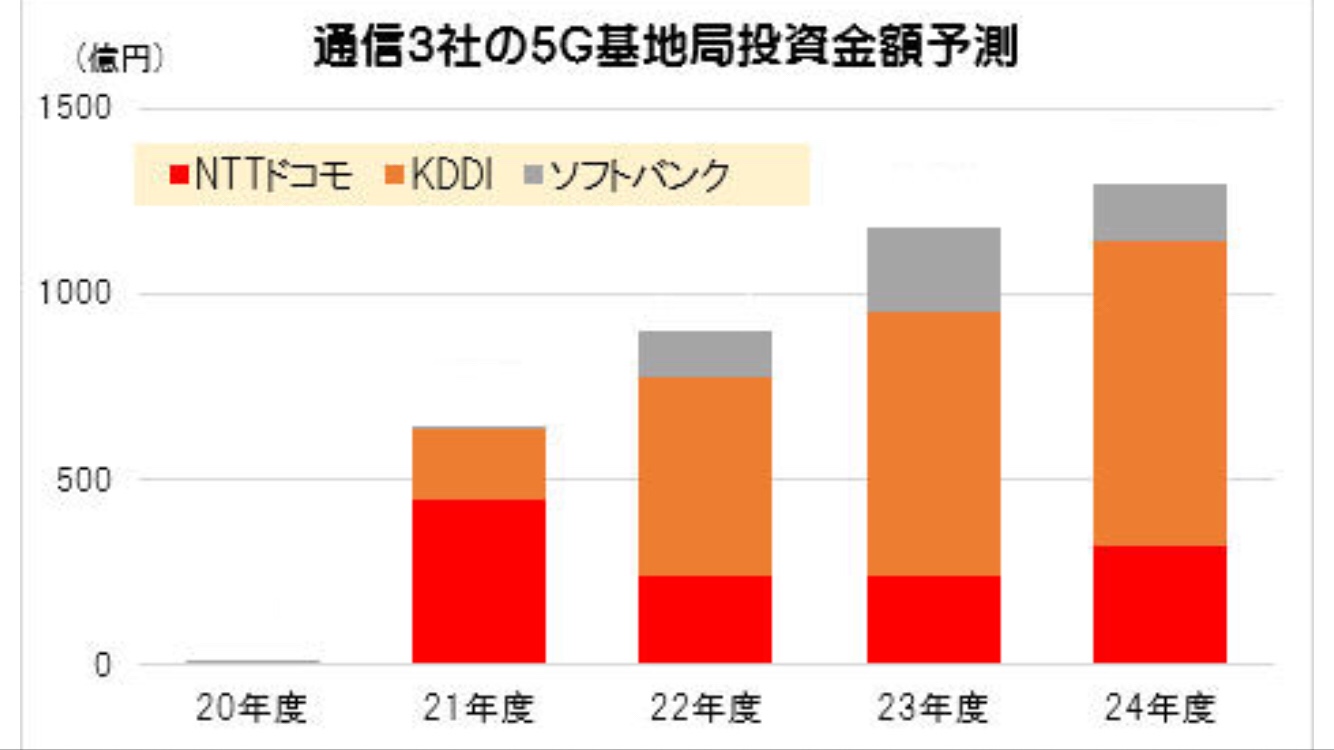
Japan 5G: Predict base station investment amount: NTT Docomo, KDDI, SoftBank
Japan 5G: NTT Docomo, KDDI, Softbank
The investment amount of 3 companies (excluding Rakuten Mobile) / 5G base station is expected to expand to more than 100 billion yen in 2023.
The situation of each company is different, such as allocated frequency bands and deployment plans.
We would like to organize the background of this forecast for each company.
NTT Docomo :
The only carrier that has acquired the 4.5 GHz band frequency.
The 4.5GHz band is very easy to deploy, with no interference with satellite frequencies.
It is also adjacent to the local 5G frequency.
NEC and Fujitsu are providing NTT Docomo with base stations that support local 5G frequencies.
KDDI:
Acquired 3.7GHz band and 28GHz band frequencies.
However, the 3.7 GHz band interferes with satellite frequencies and is difficult to deploy in urban areas.
To avoid interference, many low power / small cell base stations are deployed to cover the area.
For this reason, the investment amount is expected to be higher than that of other carriers.
Softbank:
Like KDDI, it has acquired 3.7 GHz and 28 GHz band frequencies.
SoftBank / 5G service considers IoT as a key technology.
We would like to prioritize the characteristics of automatic operation / low delay.
We also took into consideration the fact that we are positively catching the shift to 5G from the existing LTE frequency.
Investment Forecast: Assumptions
The 3.7GHz band, 4.5GHz band, and 28GHz band are the targets for the investment forecast.
Declared that each carrier will accelerate base station deployment rather than the opening plan submitted to the Ministry of Internal Affairs and Communications (calculated based on the situation)
5G initially deployed in Japan:
Option3x / NW architecture is adopted.
The NW configuration with the existing LTE band as the anchor band is adopted.
The development area is the same as the existing LTE area.
Therefore, it is assumed that the LTE network is fully developed in the urban area, 5G deployment at the annex is appropriate, and there is no new urban area.
Mobile phone Watch
https://www.google.co.jp/amp/s/k-tai.watch.impress.co.jp/docs/column/mca/1247/963/amp.index.html